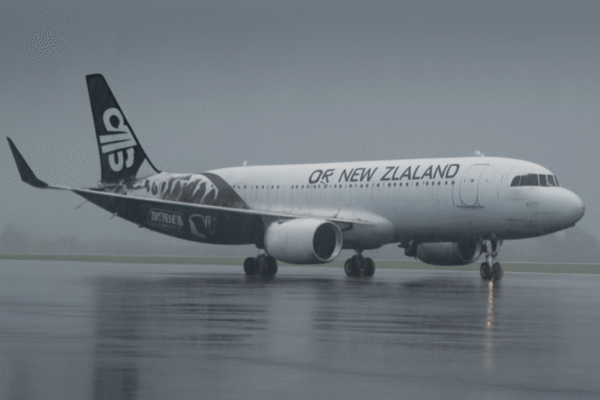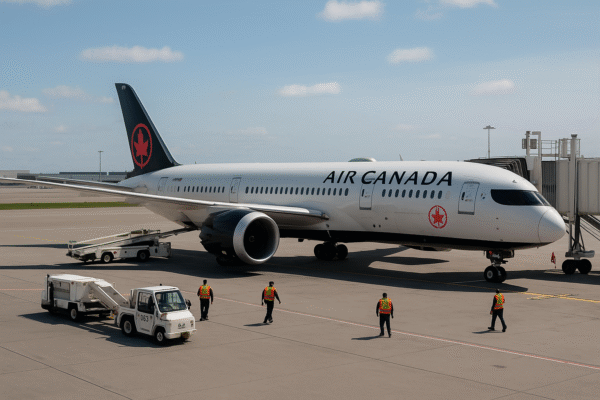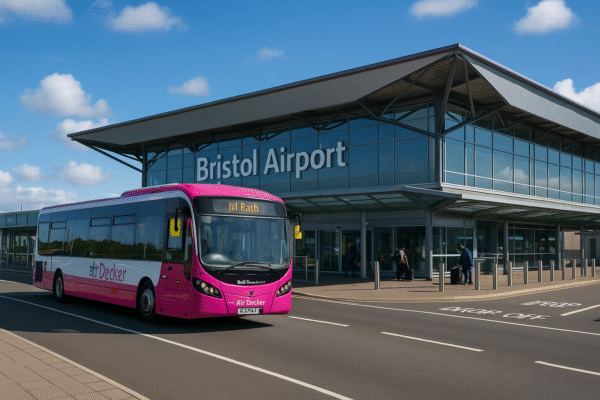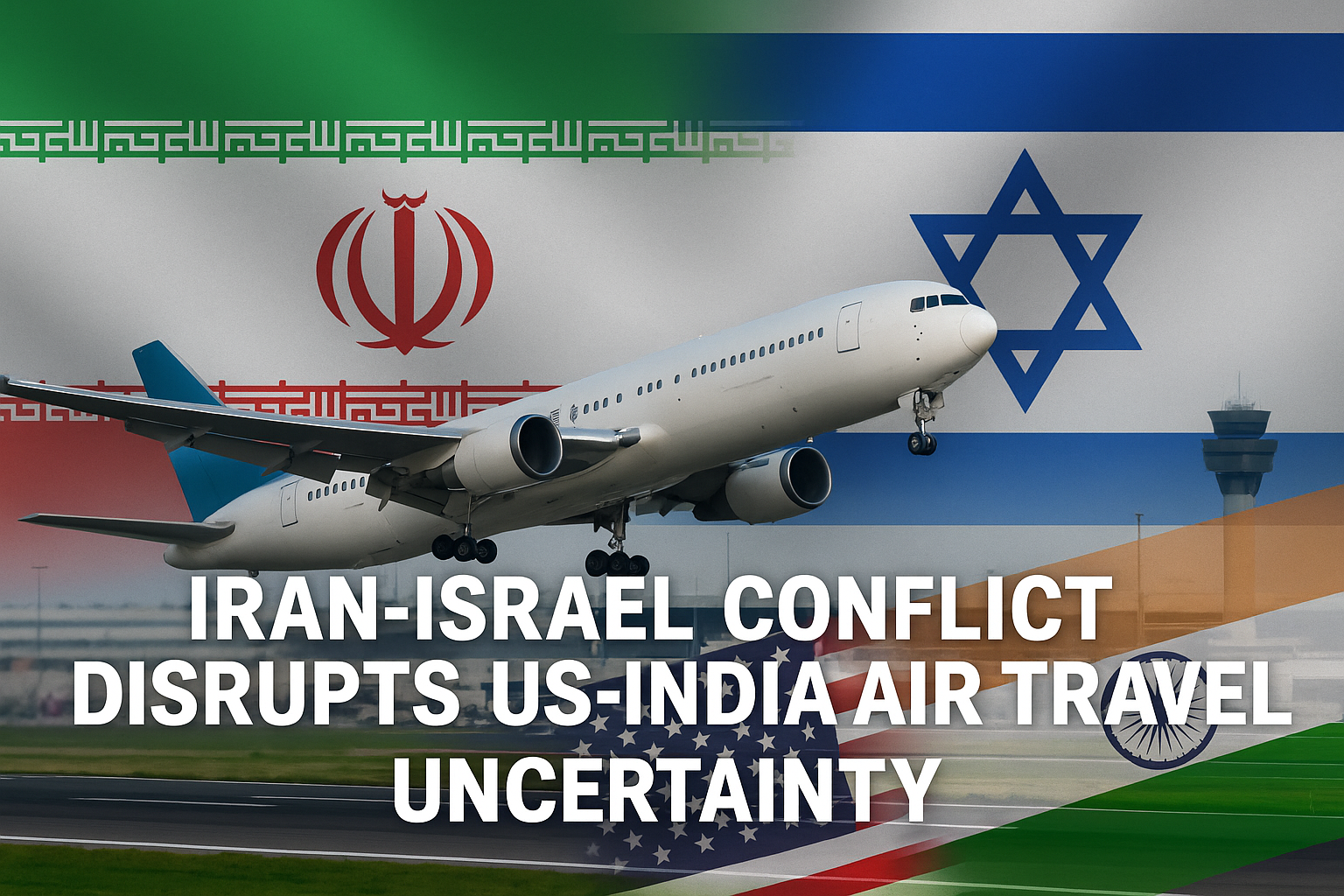As geopolitical tensions between Iran and Israel escalate, the ripple effects are being felt across international air routes, particularly those connecting India and the United States. Despite the recent declaration of a ceasefire, airspace closures and security fears are continuing to disrupt flight schedules between the two countries. Airlines and passengers alike are grappling with cancellations, delays, and rerouted services as the situation evolves.
On June 23, 2025, the situation worsened when Iran launched an attack on the Al Udeid U.S. military base in Doha, prompting several Middle Eastern countries to temporarily shut down their airspace. Although operations have since resumed in some areas, the aftermath continues to severely impact long-haul routes, especially transcontinental flights between India and North America.
Airlines Avoid Middle East and Pakistan Airspace Amid Security Risks
Major international carriers including United Airlines, Delta Air Lines, American Airlines, Lufthansa, Emirates, and Air Canada have adjusted or suspended flight services to and through the Middle East. These disruptions are not limited to Israeli or Iranian airspace—numerous carriers are also steering clear of airspace over Iraq, Syria, and Qatar due to heightened risk.
Compounding the situation is the ongoing closure of Pakistani airspace to commercial flights since April 2025, following renewed tensions with India after a terror-related incident. Airlines such as Lufthansa, Swiss International Air Lines, British Airways, and American Airlines have avoided Pakistani airspace altogether, further limiting routing options for flights into India.
With both the Middle East and Pakistan out of bounds for many carriers, routes between the US and India have become longer, more expensive, and less predictable. The current scenario has left airline executives navigating a logistical and strategic maze, balancing safety concerns with operational feasibility.
Extended Flight Times, Higher Costs, and Fewer Options
The dual impact of Middle Eastern and Pakistani airspace closures is significantly reshaping how airlines operate between the US and India. Rerouted flights are now forced to take longer paths, often over Central Asia or via the North Pole, increasing fuel consumption, crew hours, and operational expenses.
These extended travel times are also impacting fare prices. Travelers are already reporting higher ticket costs for routes between New York and Delhi, or San Francisco and Mumbai. With limited direct flight availability, passengers are increasingly dependent on stopovers through Southeast Asia or Europe, further complicating itineraries.
According to aviation experts, unless tensions subside and airspace restrictions are lifted soon, the added operational burden may lead to reduced flight frequencies and route suspensions in the coming weeks.
Government Advisories and Airline Responses
In response to the ongoing crisis, the U.S. Department of Transportation (DOT) and the Federal Aviation Administration (FAA) have issued updated guidance for flights operating over affected regions. The FAA has advised carriers to exercise extreme caution when planning routes that could potentially pass through volatile airspace, and has recommended alternate paths that may be less direct but safer.
Meanwhile, India’s Ministry of Civil Aviation is working closely with international airlines to assess the evolving risks. Civil aviation authorities from both countries are urging travelers to stay informed about flight updates and prepare for last-minute changes.
Airlines are also taking proactive steps. United Airlines, for instance, has suspended certain Middle East-bound routes and is increasing capacity on alternate US-India services that avoid restricted airspace. American Airlines has recalibrated its schedules to partner more closely with international carriers operating via Southeast Asia, while Delta is exploring route options that maintain service continuity with extended stopovers.
Challenges for Passengers and Travel Planners
The uncertainty created by the conflict has left travelers in a bind. Many passengers flying between India and the US have reported last-minute cancellations and delays, with limited access to alternate flights. Those with non-refundable fares or complex itineraries face difficulties obtaining refunds or suitable rescheduling options.
Travel agents and airline customer service teams are under pressure to manage high volumes of inquiries and rebooking requests. For now, airlines are offering waivers on change fees for affected routes and allowing passengers to modify travel dates without penalties.
However, the overall travel experience remains uncertain. With dynamic changes in flight availability and potential escalations in regional tensions, flexibility is essential for anyone planning long-haul travel through affected corridors.
Will Normalcy Return Soon?
While the ceasefire between Iran and Israel offers a temporary reprieve, aviation industry leaders warn that full recovery may take time. The geopolitical landscape remains volatile, and future airspace decisions could depend on both political outcomes and on-ground security developments.
Experts suggest it may take several months before US-India air travel fully stabilizes. Until then, airlines will likely continue to reassess and optimize their routes based on the latest risk assessments and diplomatic developments.
Conclusion: Air Travel Between India and the US Faces a Turbulent Path
The Iran-Israel conflict has significantly disrupted air travel between India and the United States, underscoring how quickly geopolitical tensions can affect global connectivity. With simultaneous airspace closures over the Middle East and Pakistan, airlines are navigating some of the most complex routing challenges in recent years.
For travelers, this means staying informed, maintaining flexibility, and planning ahead. Monitoring airline advisories, travel alerts from the U.S. State Department and India’s Directorate General of Civil Aviation (DGCA), and booking flexible fare options can help minimize disruptions.
As global tensions evolve, the aviation sector will continue adapting—but for now, passengers flying between India and the United States must remain vigilant and prepared for change.
For more travel news like this, keep reading Global Travel Wire



















